If you’re just getting started with making your own cannabis tinctures at home, you probably have already heard of Green vs. Golden dragon. But is one really better than the other? Here, you will learn the difference between the two tincture making methods, review the pros and cons of each method, and see real lab tests that show which method is more potent—and by how much.
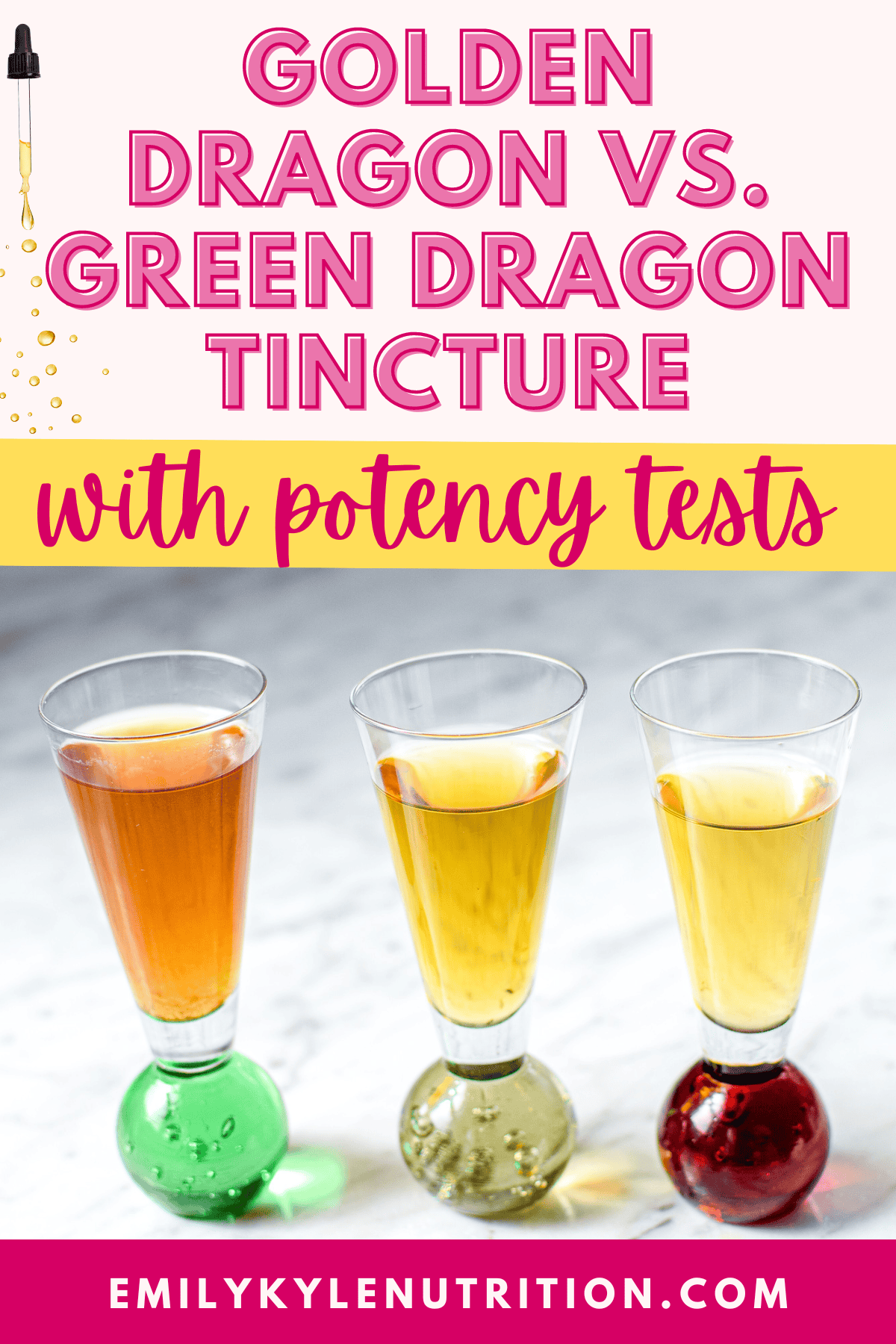
Table of Contents
- Article Features
- Why You Will Love This Guide
- The Purpose of This Experiment
- What is the Golden Dragon Tincture?
- What is the Green Dragon?
- Lab Test Results with Photos
- The Actual Lab Tests
- Test #1 – Control Material Decarbed CBD Flower
- Test #2 – Golden Dragon QWET Freezer Tincture
- Test #3 – Green Dragon Tincture 24-Hour Soak
- Test #4 – Green Dragon Tincture 5-Day Soak
- Test #5 – Green Dragon Tincture 8-Day Soak
- Test #6 – Green Dragon Tincture 30-Day Soak
- Test #7 – Green Dragon Tincture 60-Day Soak
- Frequently Asked Questions
- Conclusion – Which One is Right For You?
- Any Remaining Questions?
- More Tincture Guides
Article Features
- An overview of the Green Dragon vs. Golden Dragon tincture
- Pros and cons for each method, including taste vs. potency
- Want to skip the hard work? Shop with me and have premium, high-quality cannabis products delivered directly to your door! Now shipping across the US.
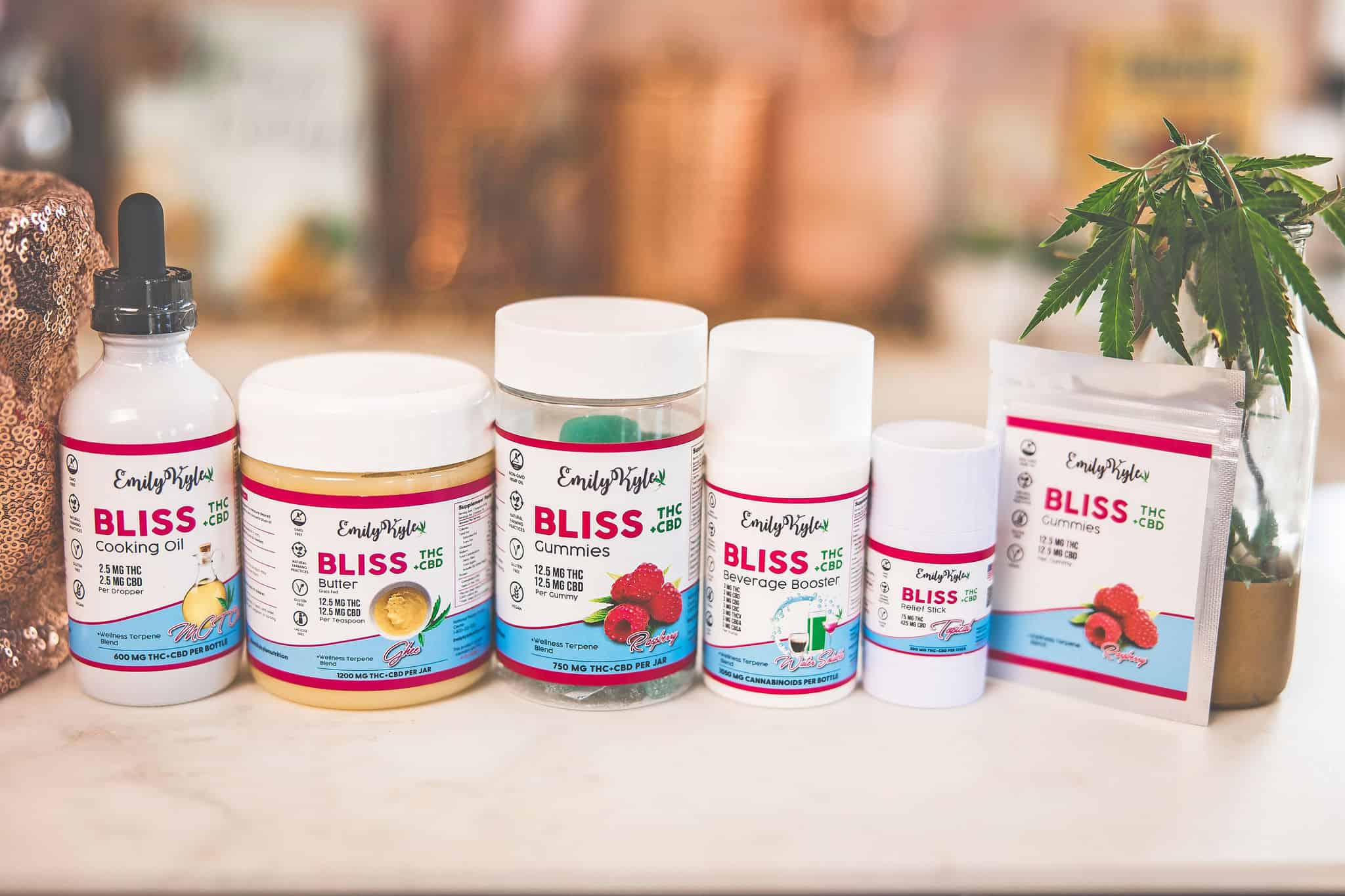
Why You Will Love This Guide
If you are a member of my Well With Cannabis Community, you are probably already familiar with the common alcohol-based cannabis tincture.
Preparing a tincture involves pouring alcohol over cannabis plant material to extract the trichomes which contain cannabinoids, like CBD and THC.
The final prepared tincture can be used for a variety of purposes at home, including under the tongue as a tincture, reduced into FECO, or used to create tasty recipes.
There are two most common processes for creating a tincture: the Golden Dragon method and the Green Dragon method.
Each process has its pros and cons that we will explore below, but the most common question most people have is – which one is more potent?
For a reliable, science-based answer, I sent samples off for lab testing to determine once and for all – which method is more potent and by how much.
Read more about the pros and cons of each method and read the lab tests for yourself so you can decide which method is right for you.
The Purpose of This Experiment
My personal research aims to identify the ideal method to achieve maximum cannabinoid extraction and minimum chlorophyll release when making a cannabis alcohol tincture in a home setting by comparing the Golden Dragon to the Green Dragon method.
TL: DR – Per lab test results, the Green Dragon Long Soak Tincture method produces a more potent tincture.
The longer the soak, the more potent the final product, but only until a certain point.
However, this method produces a stronger-tasting tincture with more residual plant matter like chlorophyll.
This leaves you, the consumer, deciding to choose potency over taste.
Continue reading to determine which method is suitable for you.
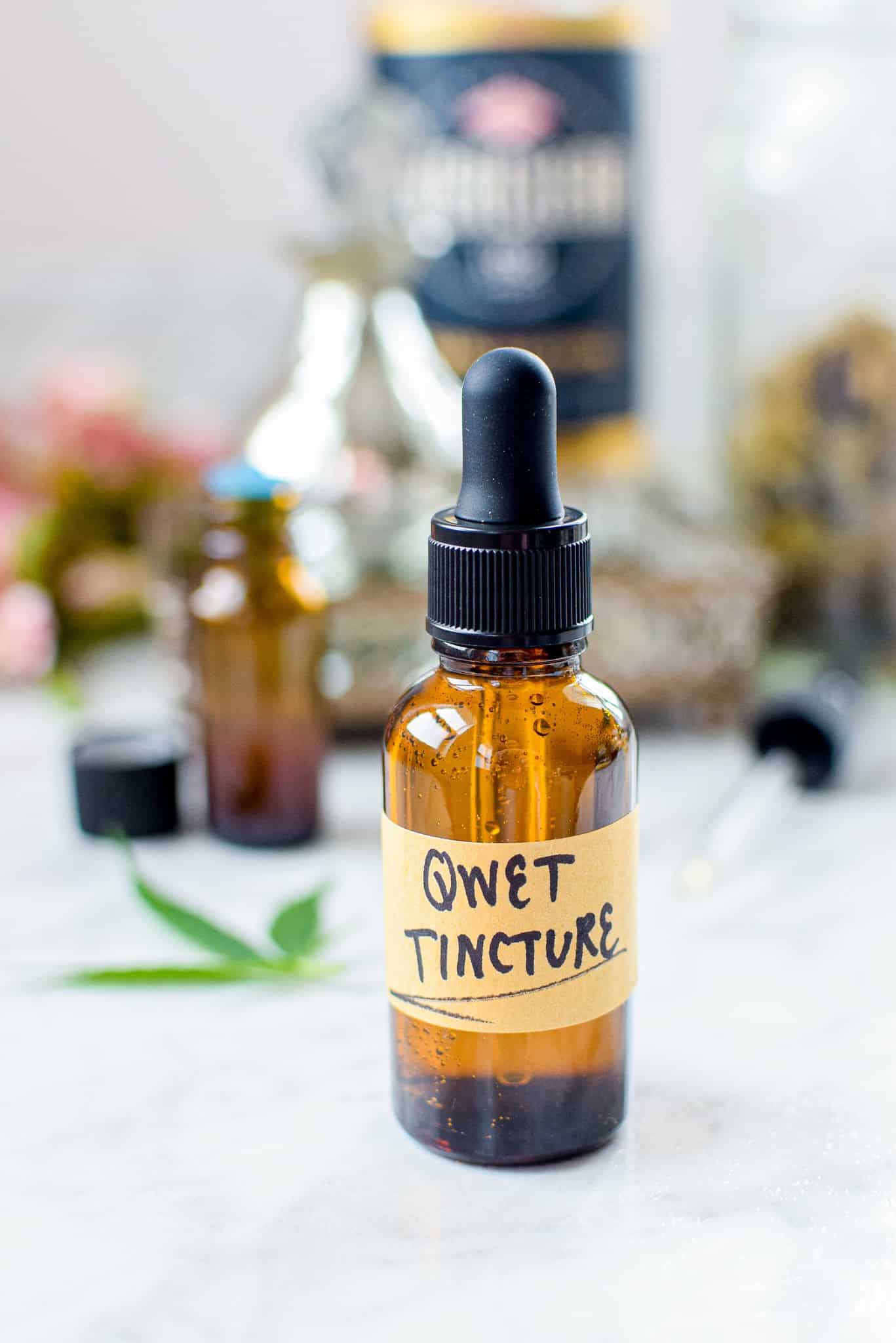
What is the Golden Dragon Tincture?
QWET stands for ‘quick wash extraction technique’ or ‘quick wash ethanol extraction’.
This method for making a cannabis tincture is often called the ‘Golden Dragon’ or ‘Ice Dragon’.
This extraction method makes a cannabis tincture using frozen cannabis, ice cold grain alcohol, and quicker wash times.
This method produces a lighter-colored, less-intensely flavored – but still highly potent – cannabis extract.
Compared to a traditional Green Dragon tincture, this quick-wash freezer method produces a much lighter-colored tincture with a much milder cannabis taste.
| Pros | Cons |
|---|---|
| Quicker to produce | Less potent per lab testing |
| Produces better-tasting edibles | Requires upfront prep work |
| Produces a much more mild cannabis taste that many people prefer | Pulls fewer plant compounds, resulting in a less full-spectrum experience |
The QWET method is preferred due to its mild taste and flavor, resulting in better-tasting edibles.
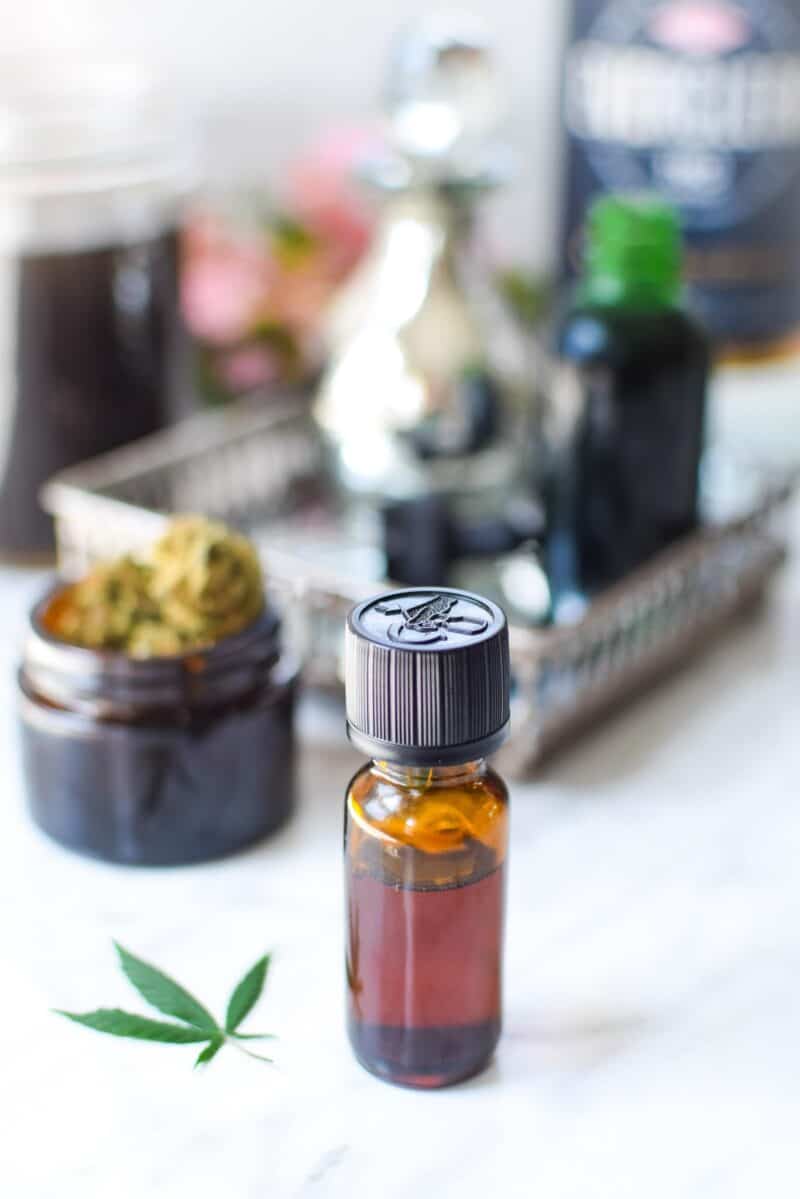
What is the Green Dragon?
A traditional cannabis tincture called the Green Dragon involves combining cannabis flowers and alcohol in a vessel and letting them sit and steep for a prolonged period, with no freezing required.
I’ve seen traditional tinctures steep anywhere between a few hours to up to 4-6 months or longer in some cases.
Fans of the traditional tincture prefer this method because it is believed that the longer soak times help extract a full spectrum of plant compounds, resulting in a complete full-extract cannabis oil after the alcohol is evaporated.
Many believe that a complete plant extract that includes more plant compounds like chlorophyll and terpenes produces a more medicinal final product.
| Pros | Cons |
|---|---|
| More potent per lab testing – until a certain point | Requires long waiting times |
| Pulls more plant compounds for a more full-spectrum experience | Produces a much stronger cannabis taste that many people do not like |
| Better suited for making FECO | Produces less desirable tasting edibles |
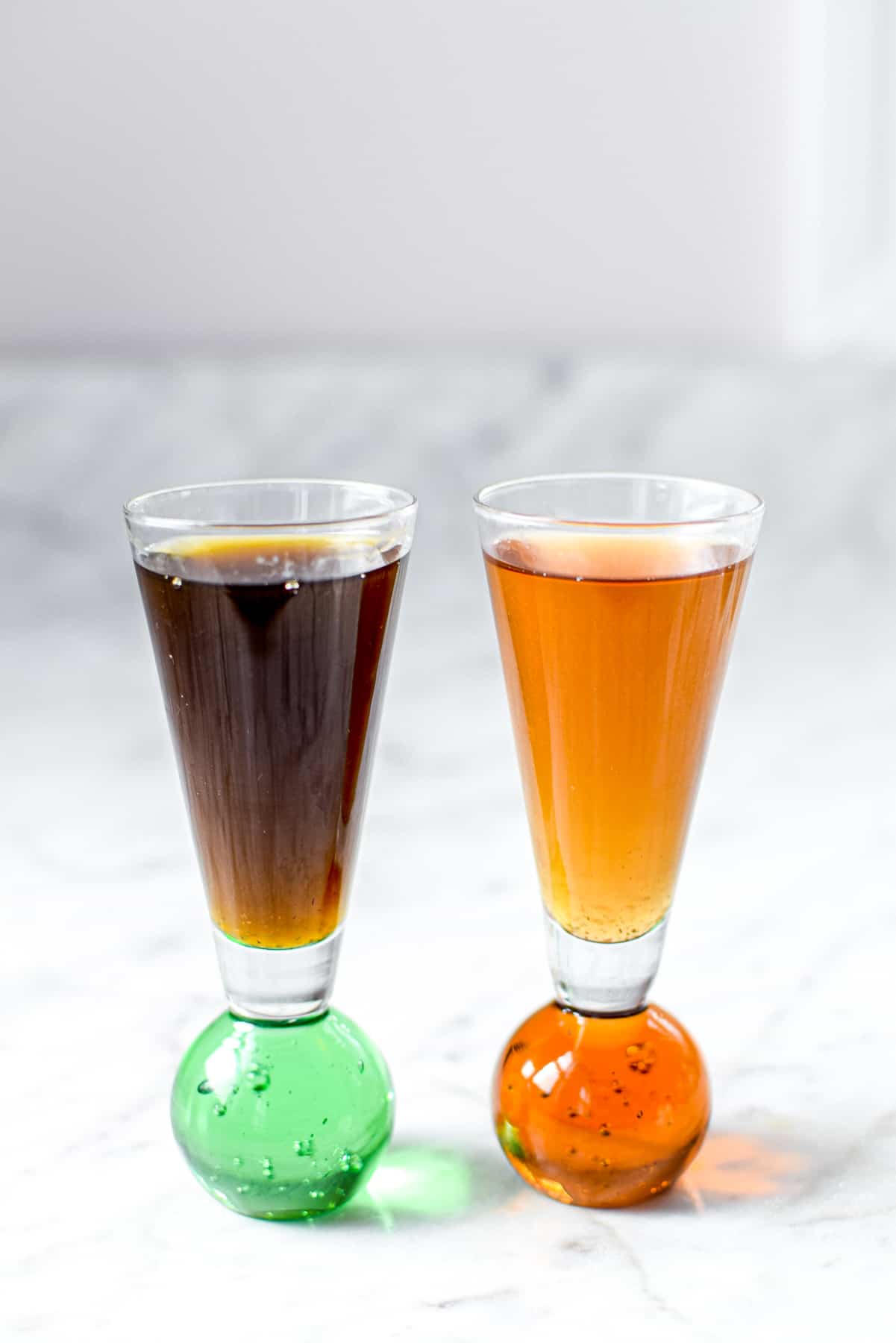
Lab Test Results with Photos
Before lab testing, we knew that the Golden Dragon tincture was preferred over the Green Dragon tincture for its better taste.
But many people wondered if we were sacrificing taste for potency.
So, I conducted a series of tests by preparing the tinctures according to the blog’s directions and sending the samples in for lab testing.
I tested the Golden Dragon single wash compared to the Green Dragon Long Soak for 24 hours, 5 days, 8 days, 30 days, and 60 days.
The results show that overall, the Green Dragon tincture was slightly more potent than the Golden Dragon tincture.
The potency of the Green Dragon tincture continued to increase slightly from 24 hours through 30 days.
However, between 30 days and 60 days, there was a degradation in the potency, showing a reduction in the number of cannabinoids available.
These results suggest that up to 30 days is a good soak time for the Green Dragon tincture, but anything more than that can be detrimental to the final product.
Results Per Dropper
When looking at the lab test results, I found it easier to visualize the information based on measured dropperfuls.
Each measured dropper has a 1mL mark.
Remember that 1mL = 1 gram, or that 1 gram = 1mL.
On the lab tests shown below, you will see the very right-hand result is printed in mg/g, which translates into mg/mL.
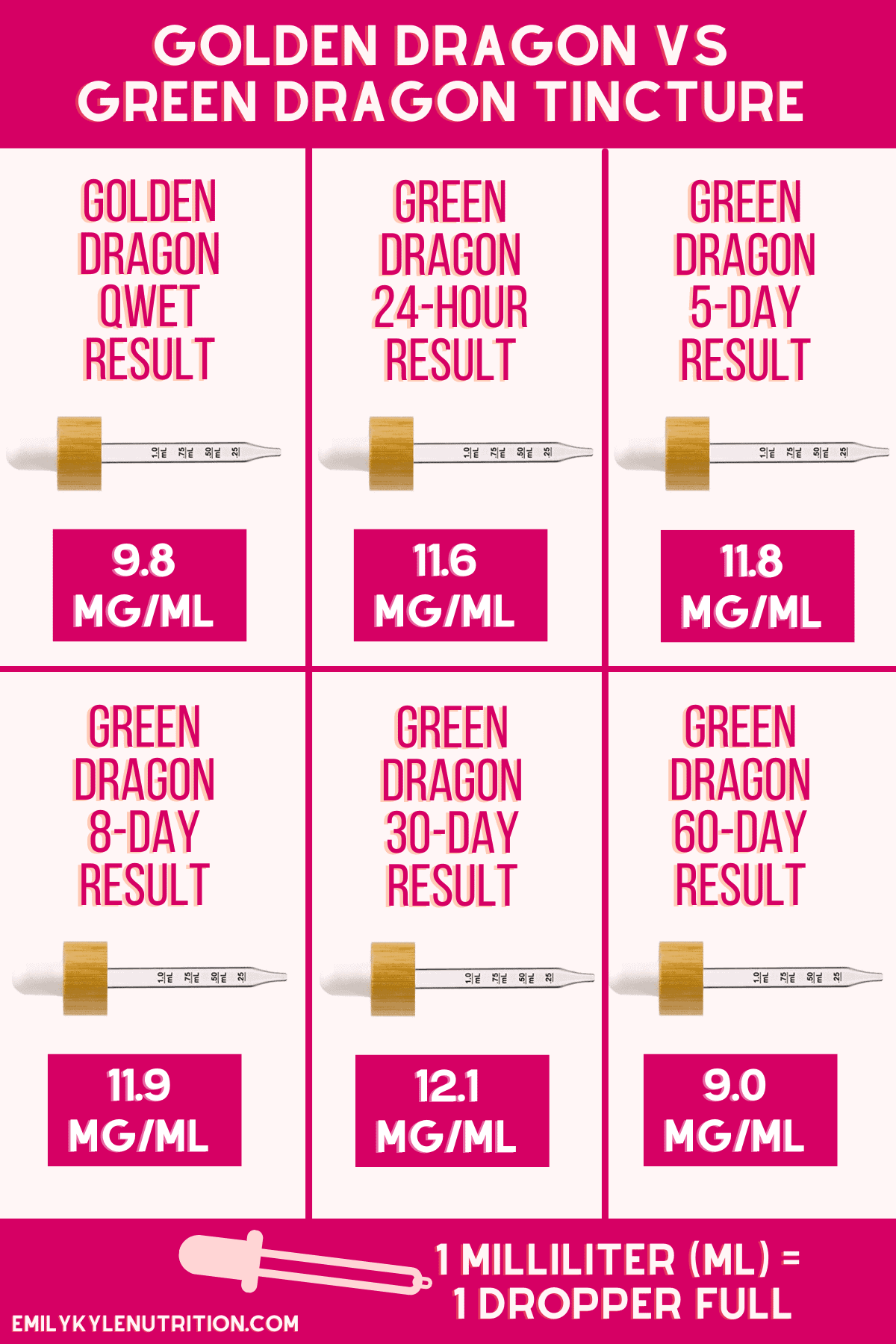
Results Per Bottle
Now let’s look at the results per bottle and compare.
A standard tincture bottle holds 30mL or 30 doses of the droppers shown above.
When looking at the results per dropperful, the potency seems quite similar among the first four samples.
But when you look at the results per bottle full, it seems that the potency does vary between the Golden Dragon and 30-day Green Dragon tincture.
That’s a difference of 69mg per 30mL bottle!
And then you will see that it dramatically drops off between the 30-60 day tincture. The final test has the lowest potency result.
This suggests that any soaking time over 30 days is not ideal and may lead to degradation of the cannabinoids.
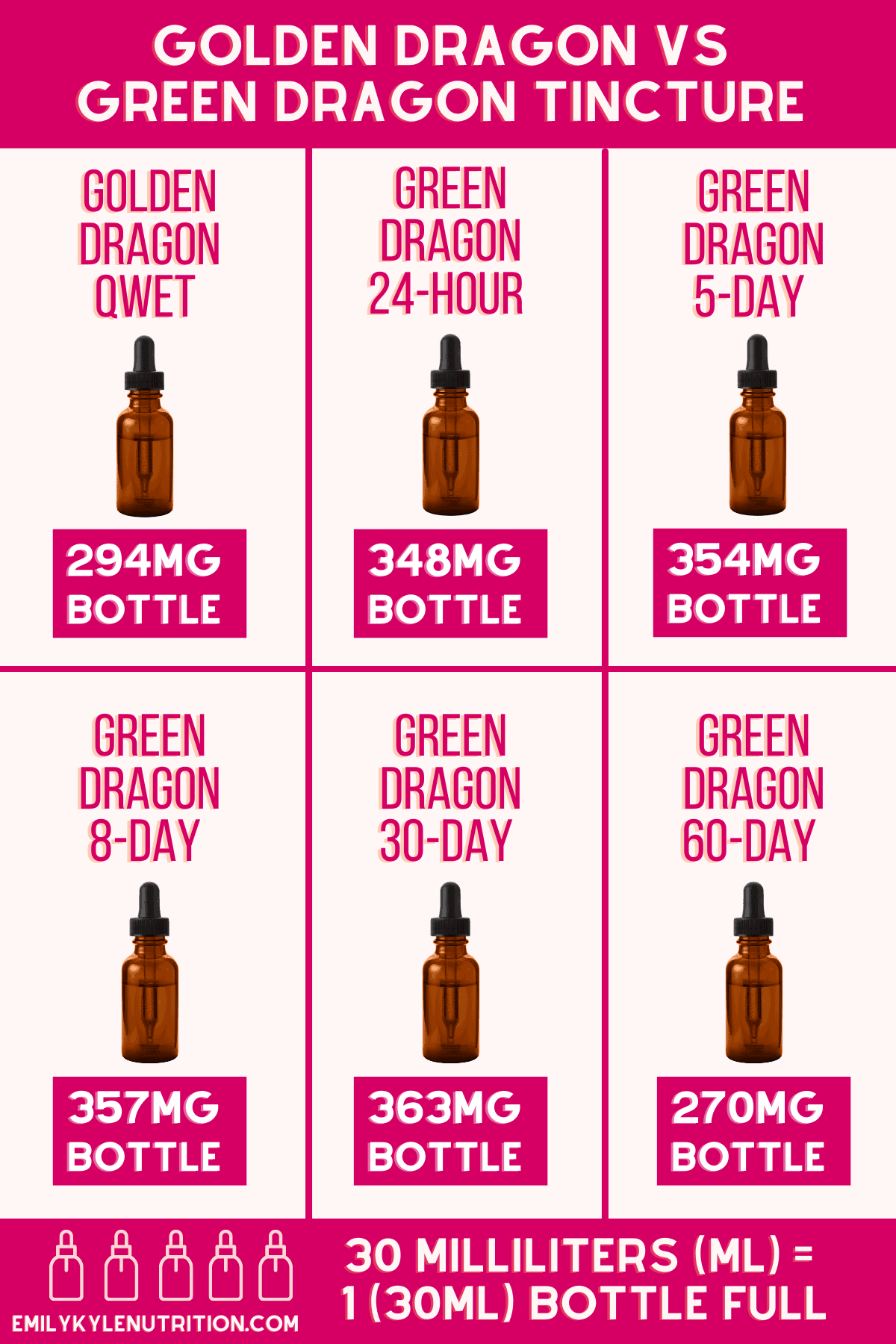
The Actual Lab Tests
If you’re interested in seeing the actual lab tests used and reviewing them for yourself, I am happy to share them here.
I will share 7 lab tests; the first is the decarboxylated material we started with that serves as the control, followed by the 6 tinctures.
To prepare each of the tinctures, we used 12.18 grams of decarboxylated CBD flower (14 grams before decarbing, but we accounted for the 0.87 loss associated with the process.)
We then used 8 ounces of Everclear 190 Proof Grain Alcohol for each tincture.
Each method was followed precisely as printed in the instructions:
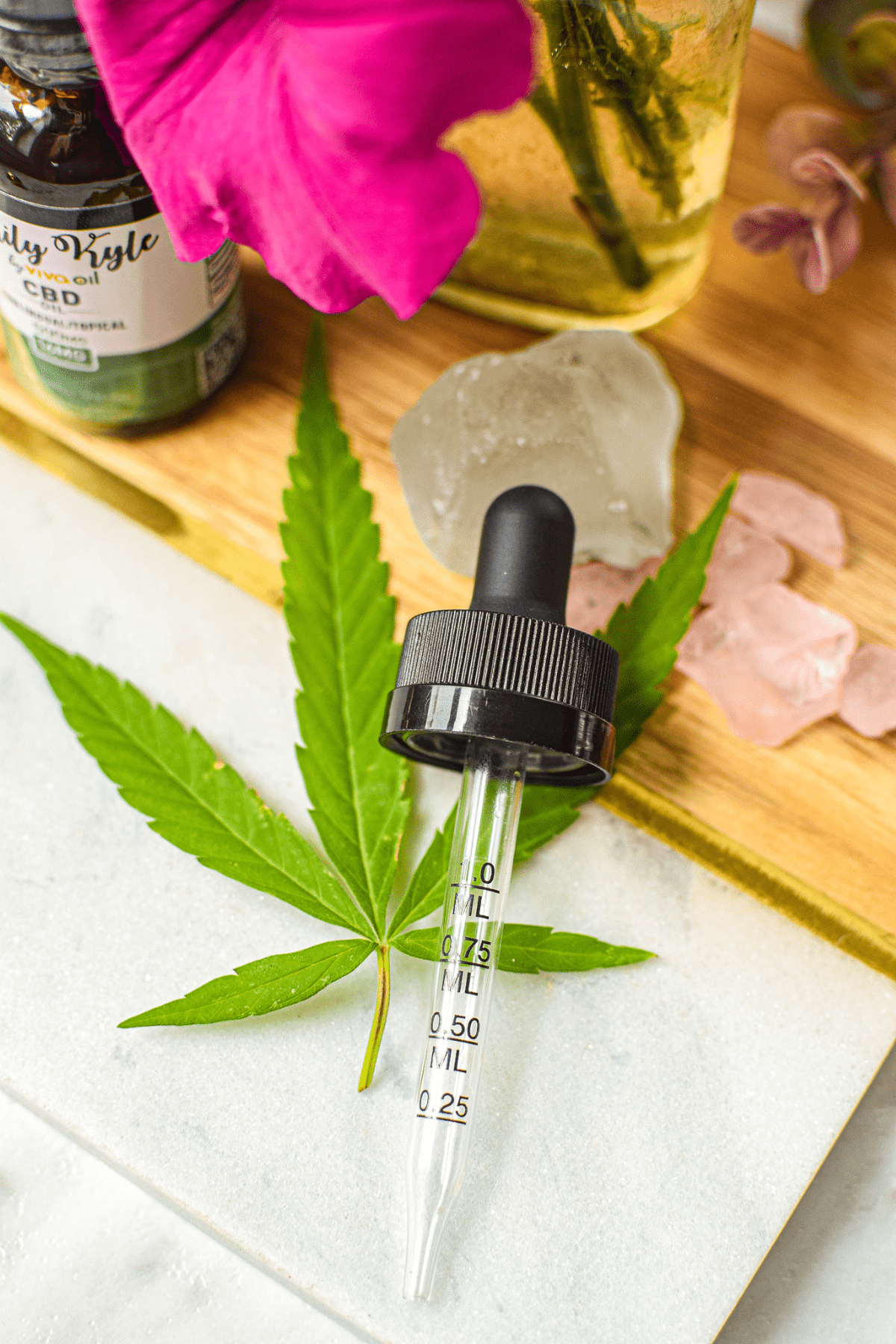
Test #1 – Control Material Decarbed CBD Flower
We started with CBD flower decarboxylated for 90 minutes using this decarboxylation process.
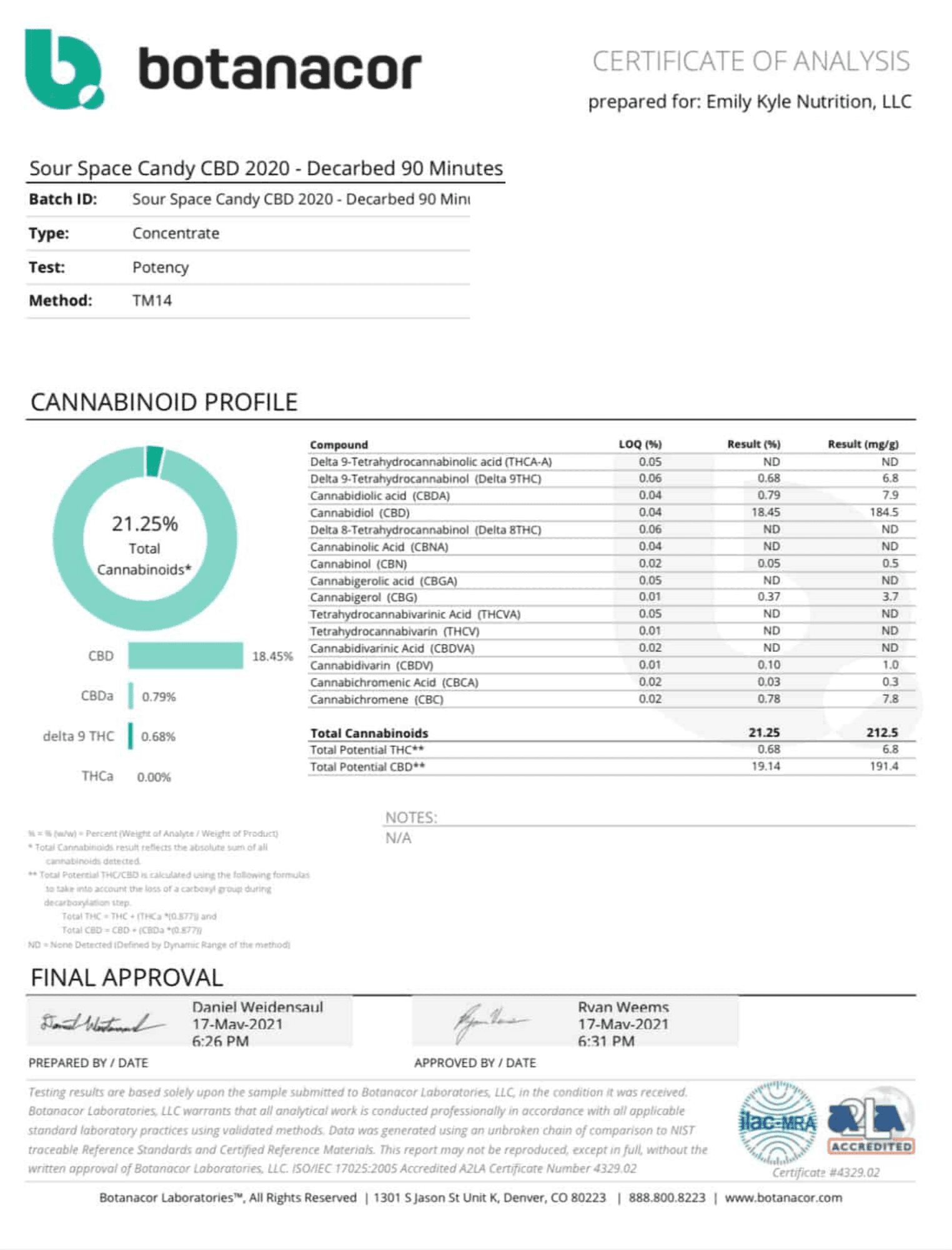
Test #3 – Green Dragon Tincture 24-Hour Soak
These are the results for the Green Dragon tincture that was left to soak for 24 hours.
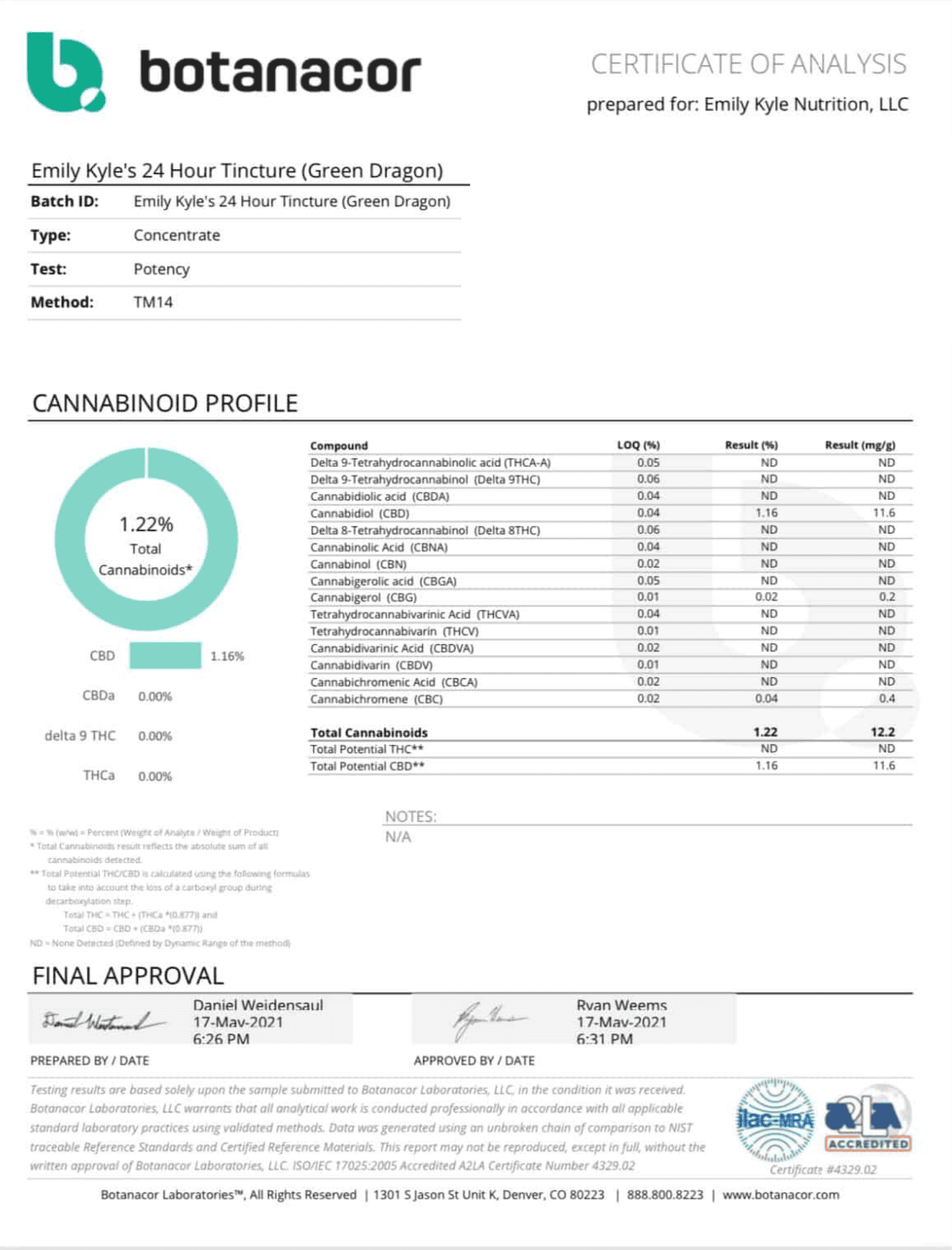
Test #4 – Green Dragon Tincture 5-Day Soak
These are the results of the Green Dragon tincture that was left to soak for 5 days.

Test #5 – Green Dragon Tincture 8-Day Soak
These are the results of the Green Dragon tincture that was left to soak for 8 days.
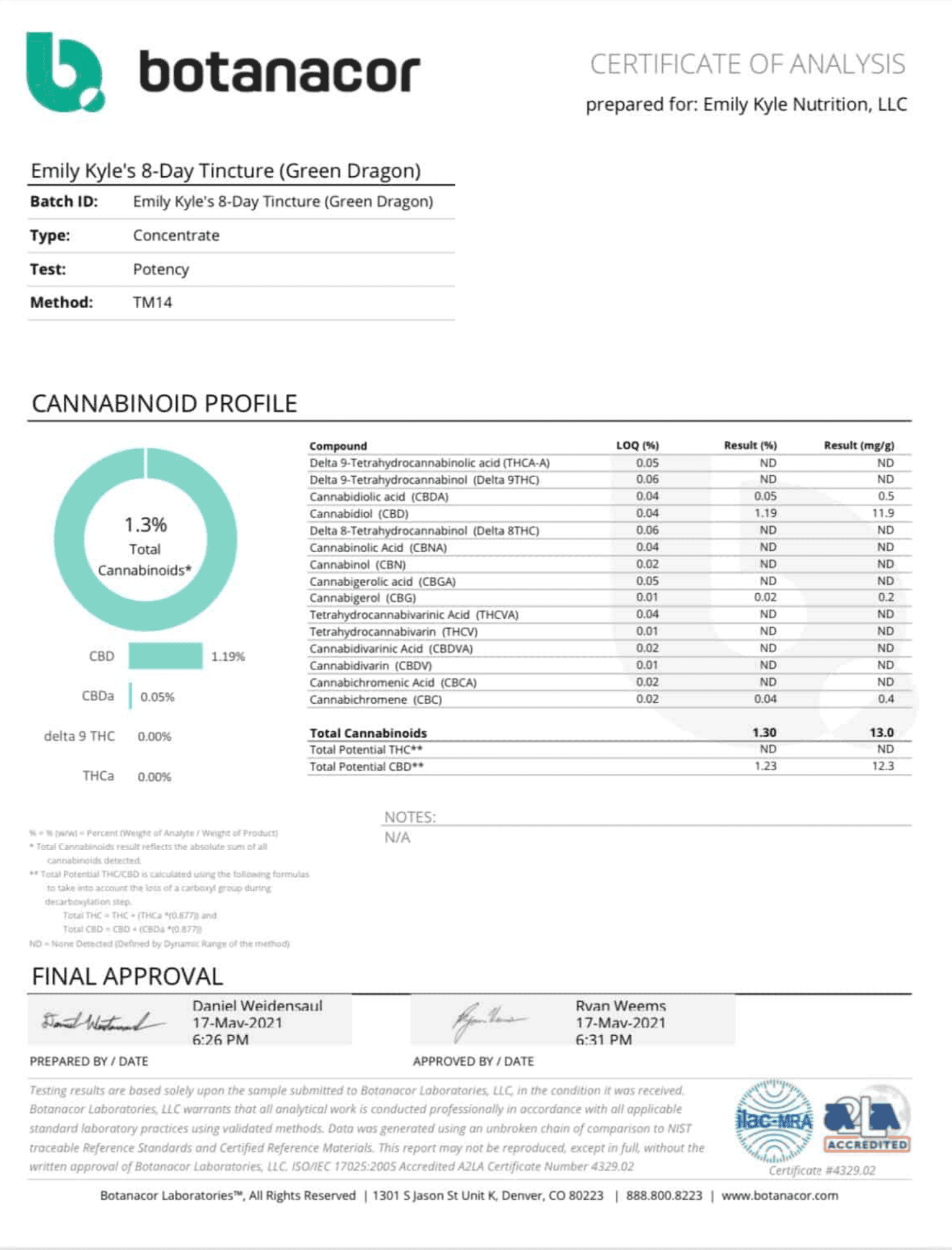
Test #6 – Green Dragon Tincture 30-Day Soak
These are the results of the Green Dragon tincture that was left to soak for 30 days.
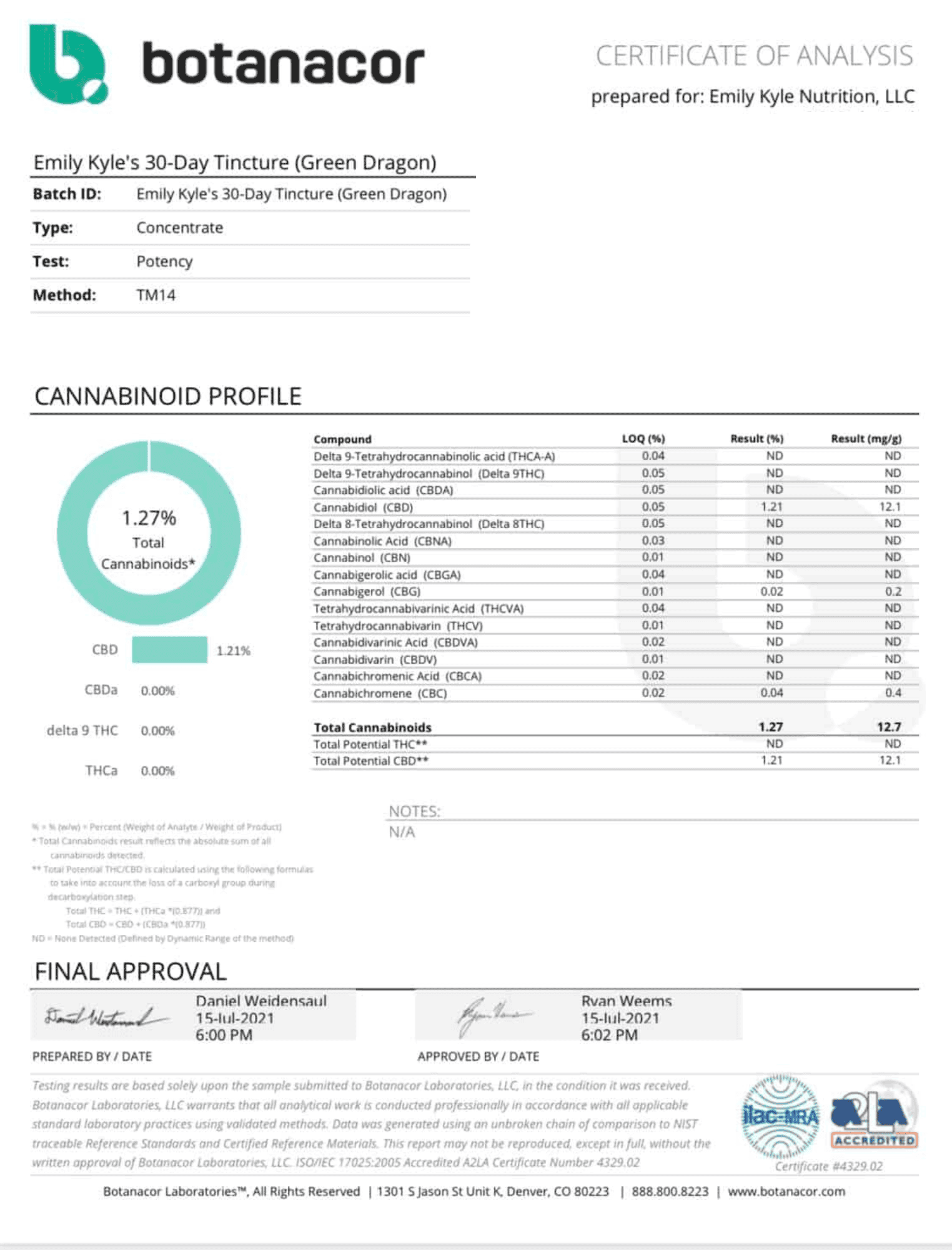
Test #7 – Green Dragon Tincture 60-Day Soak
These are the results of the Green Dragon tincture that was left to soak for 60 days.
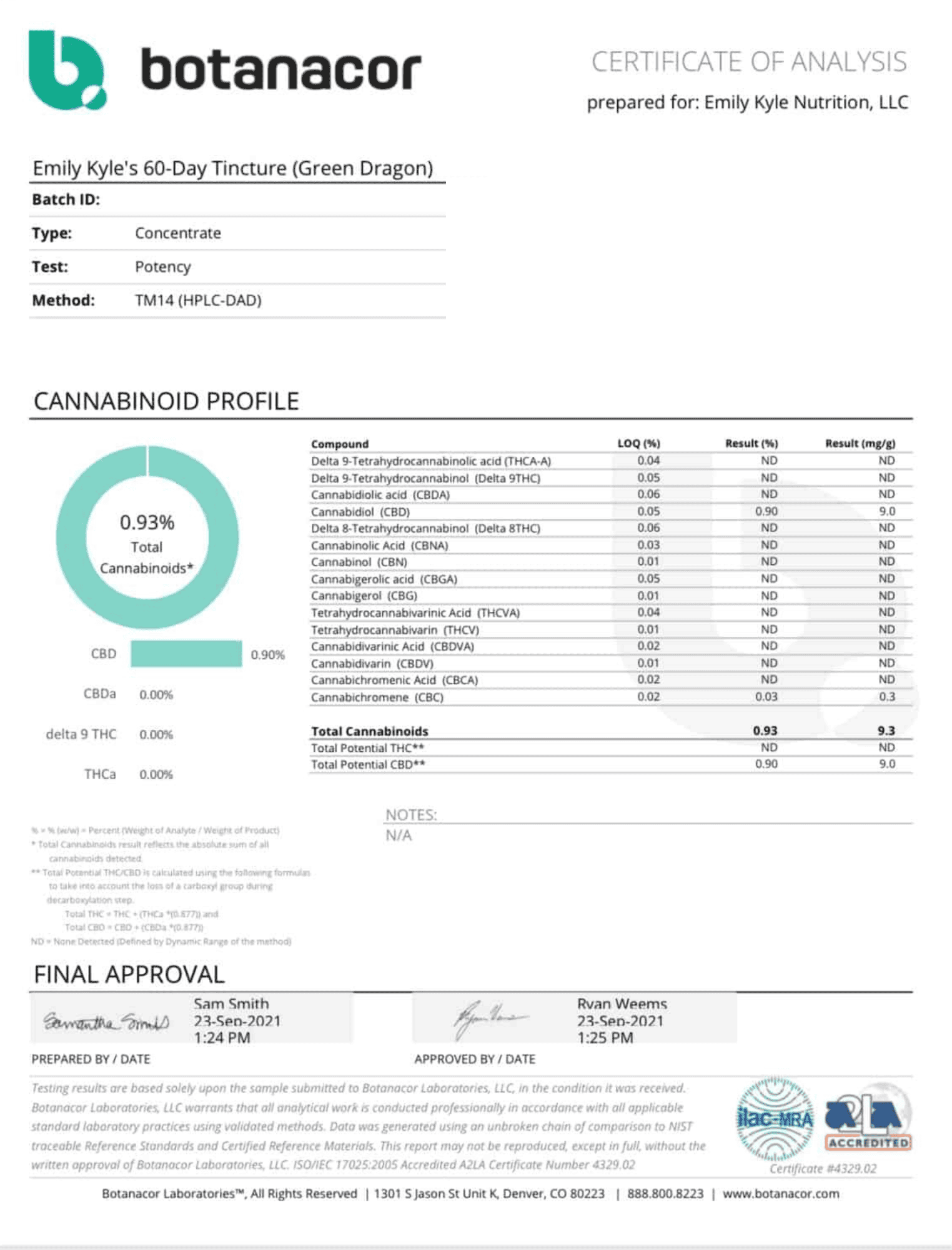
Frequently Asked Questions
There are a few reasons why we used CBD when we completed this in 2021. Cost is one; we are NYS-licensed hemp farmers, so we have access to an abundance of CBD products. Legality is the other; we are legally not allowed to ship THC samples across state lines, and the lab we use is in Colorado. I am confident that these cannabinoids function the same within the tests and that if I used a THC-dominant flower, the results would be the same.
Yes, definitely. The trichomes containing cannabinoids should not act differently in testing based on their makeup.
Conclusion – Which One is Right For You?
With all this information presented, it is time for you to decide – which one is right for you.
It is most definitely a question of taste vs. potency here.
The Golden Dragon no doubt tastes better as a sublingual or to make edibles.
But the Green Dragon is undoubtedly more potent overall, but only until a certain point.
Think about your end goals. What are you trying to achieve? Delicious, tasty homemade cannabis edibles? Or a more medicinal end product like FECO?
Ultimately, the choice is yours. Thankfully now have the education and resources needed to make an educated decision for yourself.
Tincture Recipes
If you’ve never made your tincture before but are ready to try it now, be sure to grab the tincture recipes I have here:
Cannabis Infusions & Extractions
Easy Green Dragon Recipe » Cannabis Alcohol Tincture
Cannabis Infusions & Extractions
Golden Dragon QWET Cannabis Freezer Tincture
Cannabis Infusions & Extractions
How to Make a CBDA Tincture
Cannabis Infusions & Extractions
How to Make a THCA Tincture
Cannabis Infusions & Extractions
Cannabis Roots: Benefits, Uses & Tincture Recipe
Don’t forget to evaporate the alcohol if you find the burn of the alcohol too overwhelming.
Any Remaining Questions?
I know a lot of information was shared here!
If you have any more questions about these results, please join the Well With Cannabis Community or post your question below.
More Tincture Guides
Articles & How-To Guides
How to Use A Cannabis Tincture: Step-by-Step Guide
Articles & How-To Guides
Where To Buy High-Proof Alcohol For Tinctures
Articles & How-To Guides
How to Evaporate Alcohol From Tinctures
Articles & How-To Guides

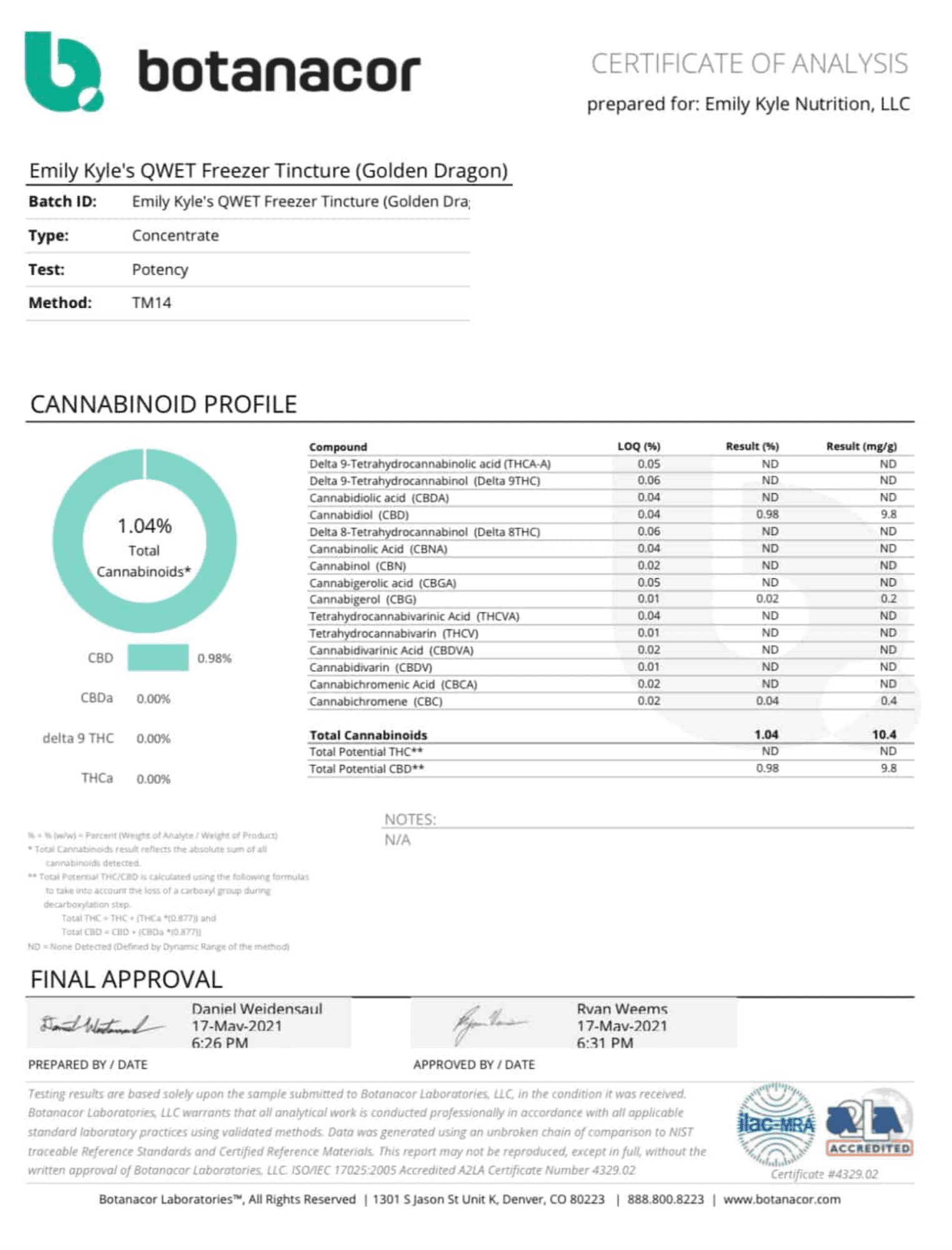
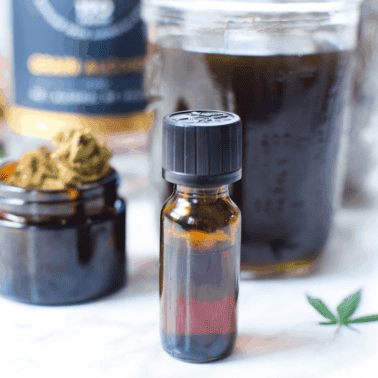
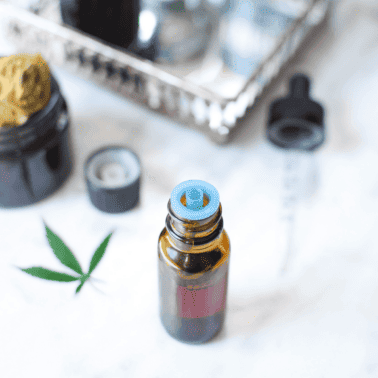
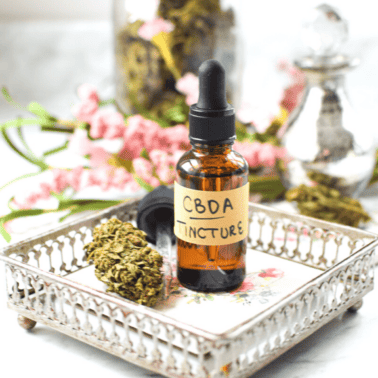
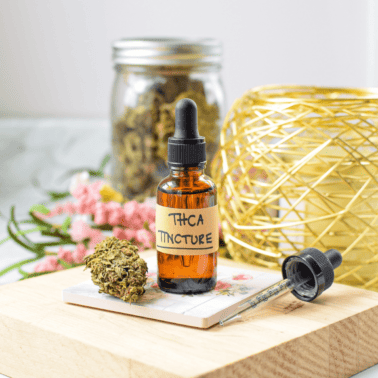

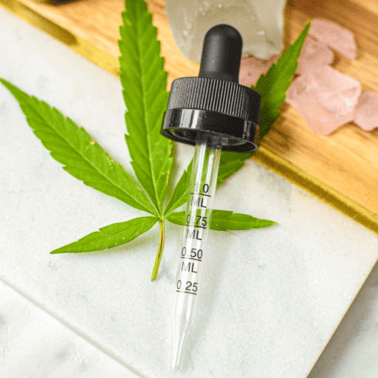
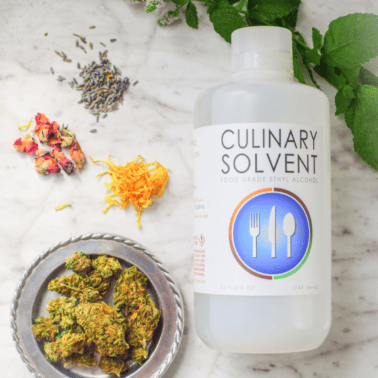
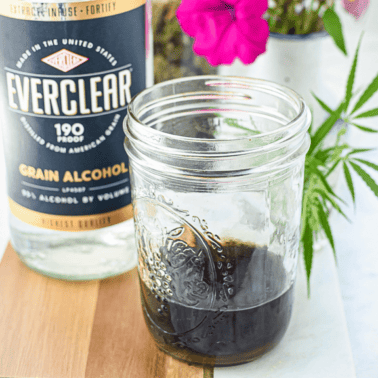
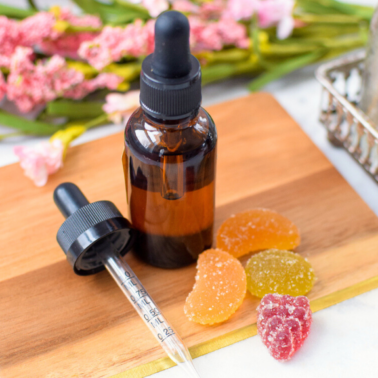
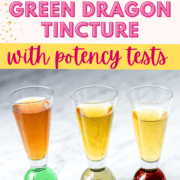








Thanks for running those tests showing how potency changes over time for the green dragon. Exactly the info I was looking for.
So happy you found these results helpful, John!
Do you know what starting with frozen product, like the golden dragon method, then soaking in the freezer for 12-24 hours, shaking every so often would do? I’m wondering if it could produce sort of a happy medium? It seemed like possibly a way to get a product stronger than golden dragon, but less plant taste and color than green dragon?
Hi Glitch. That’s exactly what I do. I freeze the alcohol and cannabis for 24 hours, then combine and put back in freezer. I shake every few hours and then strain between 24-48 hours. The 48 hour soak is actually too long for my liking. 24 hours seems like a sweet spot in my opinion. It’s worth trying a small batch and see if you like the end results.
Sorry, repost. I missed the “y” in my Email address
Did I calculate correctly, that from the rougly 2500mg CBD you only got 294 to 363mg in the extract, meaning that about 80 to 85% of the CBD ist still in the “waste Material”?
This would men, that after drying it, you still have very potent cannabis to smoke or just to swallow?
Best Regards
Olly
Hi Olly. Actually, 80 to 85% of the CBD is extracted, leaving very few cannabinoids in the plant material after soaking. Hope this clears it up!
Hi Emily,
I have really enjoyed your you content. One question I haven’t gotten a solid answer for is regarding the alcohol. 190 alcohol is only accessible with a permit, and in the other states around me is illegal. Online won’t send to my state unless I have a permit, so I am locked to 151 Everclear. If doing the Golden Dragon, should I soak my cannabis longer to achieve similar results as a higher proof alcohol? I see the Green Dragon produces a better product with even just an 8 day soak, so wondering if I should just do this instead? I would like to know what you think 🙂 Thanks so much!
Susan, thank you so much for your kind words and for enjoying my content—it truly means a lot to me! 😊 To answer your question, if you’re using 151-proof Everclear for the Golden Dragon, you might find that extending the soak time could help maximize the infusion, although it may also introduce more chlorophyll. I would experiment with a few small batches with different soak times to see what you prefer in terms of taste and potency. It’s OK to try several different batches until you find your sweet spot. Then, go with the method that feels right for you! And don’t hesitate to let me know if you have any other questions.
I have so many questions revolving around turning green dragon into feco. I tried and failed miserably lol..
Sorry to hear it didn’t work out, Michael! Feel free to email us all your questions at [email protected] — we’d be happy to help you troubleshoot and guide you through the process.
Im making a cannabis tincture and keeping it in the freezer and store it for 30 days. Is it even worth steeping the tincture that long to make it potent. Or can I just open it and strain it and consume?? Today is the 7th day in freezer. Any feed back is appreciated.
P. S. 21 grams of flower
2 cups of grain everclear. 190 proof.
Hi Noel. The key takeaway from the lab tests is that the potency difference between a 7-day soak and a 30-day soak is minimal. The Green Dragon method does show increased potency with longer soak times, but this benefit tends to plateau before hitting the 30-day mark. So, if you’re eager to use your tincture now, you can strain and consume it at day 7 without losing significant potency from the longer soak.
Feel free to experiment with different soaking times in future batches to see what works best for you. You’re already doing a fantastic job, and it’s all about finding the sweet spot that aligns with your desired outcome.
Enjoy the process, and happy tincture-making!
Feco question here. How do I figure out the potency of QWET feco? I want to make hard candy and use dispensary cannabis.
Thank you!!!
Hello Janette! Do you know the potency of the flower in % you started with? And how much you used in grams? If so, you can input those values into the dosage calculator. The final total numbers you get of mg of THC and mg of CBD for the whole batch will stay the same regardless of the volume of alcohol lost when you evaporate. Let me know if you need any help with this!
Great article as always! And thank you! 🙏
Has there been, or have you tried, the Green Dragon version, but storing and shaking for up to 30 days, but in a freezer?
Hi Mike. Many cannabis enthusiasts have experimented with this method and found success. Experimentation is part of the fun in the world of cannabis, so I definitely recommend giving it a shot and see how it turns out for you. And if you do try it, we’d love to hear about your experience!
Thank you and your team for doing and publishing this research.
Do you know if the cannabinoids continue to degrade after the Everclear is strained from the flower?
Do you assume the results would be similar for a THC-dominant strain vs the CBD-dominate that was used in this test? Why so?
Thanks!
Hi Mark. To answer your first question, once the Everclear is strained from the flower, cannabinoids do continue to degrade over time, especially when exposed to heat, light, and air. Storing in a cool, dark, and airtight environment is ideal for minimizing degradation.
As for your second question, while we used a CBD-dominant strain for this particular study, the results will be similar for a THC-dominant strain. CBD and THC are both cannabinoids and have similar chemical properties.
Thank you for your support! Keep exploring and learning!
If you don’t decarb flower would it do it when you evaporate the alcohol off in the final stage?
Hi Chris. Yes, you’ll want to evaporate off all of the alcohol to FECO stage and then decarb the FECO like you would a concentrate. Follow the same process, put the FECO in an oven-safe container and bake at 240 for 40 minutes or until it stops bubbling. I hope this helps!
This is a great article! Thank you for all your diligence!
You answered a question that has long been on my mind, which is: Where is the point of diminishing returns when making Green Dragon tincture?
What your research clearly shows is under the laboratory conditions, 24 hours is the ideal time for making the most potent tincture in the least amount of time. The 30 day tincture only added 15mg THC (348mg/bottle vs. 363mg/bottle). It would be interesting to look at two, five, seven, etc. day soak times. Great job!!!
Hi Dave. Thank you for your kind words! Emily works hard to improve the cannabis education she offers, so it’s always so rewarding to receive positive feedback. There are results listed for the following soak times: QWET, 24-hour, 5 days, 8 days, 30 days, and 60 days. I hope this helps!
Hi Emily, your resources have been invaluable to me as I try to figure out how to make my own edibles. It’s a surprisingly scientific world! I have done many searches and talked to many folks and your processes are by far the clearest and seemingly most research based of them all. So up front, thank you!
I did have a question about the above. If I use the freezer/golden method and then let sit at room temp for 24 hours before draining would that be best of both worlds or does that have unforseen consequences I’m missing?
Hi M! Thank you for much for your kind words! Emily works hard to continuously improve the cannabis education she offers and it’s always rewarding to receive such wonderful feedback. ? No consequences other than your tincture may have more of a plant taste as more plant matter will get extracted during the longer soak. That’s not really a consequence other than taste though. I hope this helps!
Hello,
First thank you for all of the information you have provided on your website. Did you “burn” off any of the alcohol before submitting? I plan on doing a tincture with a quarter and using about 4oz of golden grain based off your recipe. If I were to have the exact same bud, if I let half of the dragon tincture evaporate being left with 2 ounces, would I be looking at around 10mg in a half of a ml? I tried making a tincture once with ABV and didnt do a burn off. I swear it burned off a layer under my tongue. Was very “hot”!
Also planning on making a MCT infusion as well with a different batch of buds. Gonna find out what i like more. I am getting to the age where I hate smoking for all of the negative reasons people list.
Hello Drew; you are most welcome; thank you for the kind words. No, I did not burn off any alcohol before submitting. There is no way to know how many milligrams there will be in the end product if you don’t know the % THC of your starting material. But if you do, the total milligrams of the whole batch will remain the same, no matter how much alcohol you do or do not burn off. The alcohol burn is terrible; you can find my safe evaporation methods here. I hope this helps!
Very interesting article. I wonder if there is just less THC in the 60 day green dragon because the THC is decaying? I heard that chlorophyll leads to faster degradation. So it would be interesting to test golden vs green dragon storage behavior. E.g. test both initially and after 1 month, 2 months, 3 months, half a year and a year maybe. If it’s true that chlorophyll leads to faster degradation then after some time of storing the golden dragon should be stronger than the green dragon.
Thanks for reading, Chris, I wondered this, too. It would definitely take a lot of lab testing to know for sure!
I’m assuming it makes a difference if using sativa,hybrid or indiga and potency of flower used effects outcome.
Yes, it absolutely does make a difference, Charlie!
Hello! Fantastic site. According to my calculations using your calculator (thank you by the way!), my 8oz. of green dragon tincture should have 2216.18mg of CBD. Does that number refer to the most you can possibly extract, say after thirty days, for example? I’m trying to calculate the potency of a 3-day everclear soak of 14g of 19% CBD flower.
I also left my green dragon in the freezer. Is there any benefit to doing so? Thank you so much for your work on this site!
Hello Daniel, thank you so much! Yes, that would be the *maximum* possible, and its always safe to assume you will lose a little bit along the way. There’s no benefit to putting the Green dragon in the freezer once made (that I am aware of) but it’s not harming it either 😀 Happy tincture making!
24 hour Green Dragon seems like a no brainer after seeing all the data.
I’m so glad the data helped you make a decision, Björn!
Emily,
I really enjoy reading your articles and have found them to be extremely informative. One question I have in reference to the green dragon (long soak) method is do you need to agitate the jar at all during the soak process?
Hey Jeff, thank you so much! You can gently shake if you want to, it certainly wont hurt 😀
After conducting my own research and producing my own THC, CBD, and CBG-dominant ethanol tinctures (around a dozen), I keep returning to your method. You’ve managed to distill (ha) this process down to a simple list of memorable and clear instructions.
Your writing and experimentation is greatly appreciated and has brought much health to myself and my community.
Merci, Emily !
You are so kind, thank you for sharing your experience, Régine, I really appreciate it!
Hi Emily.
I have a technical question.
In reference to your testing results:
Test#1 shows 18.45% CBD in decarb flower
Test#5 reveals only 1.19% CBD in 8-day “green” soak.
Does this infer that approx. 17.26% CBD remains in the leftover plant material?
Thanks.
Hey David, thanks for reading. No, this does not infer that 17.26% CBD remains in the plant material. You are comparing two different things – dry cannabis flower and a solution of cannabis and alcohol. The volume of the alcohol skews the percentage. The first test just shows that 18.45% of the flower material is CBD and that it contains 184.5mg of CBD per gram of dry flower. I hope this helps!
Did you ever get results from your two month test? That would be very important to know.
Hey Mike, I just updated the post and added them. I hope that helps!
How many washes did you do with the QWET? I wonder if multiple washes would’ve been a similar yield to the 24hr soak.
Brad, I did three washes.
So based off of lab test results, what percentage of your starting material was actually extracted? Or maybe i should ask how much loss was there compared to making MCT tincture. Trying to get an idea on starting percentage and end result percentage for dosing.
Daniel, I don’t have lab tests to compare this to an MCT oil extraction, but from my understanding, the alcohol extraction method should be the more efficient method.
Have you or anyone tried starting with the Green Dragon method, say for a month, and then taking that and doing the Golden Dragon method. I wonder what that might do.
Dennis, I don’t think you would get the benefits of the freezing process outlined in the Golden Dragon method if you make a Green Dragon tincture first.